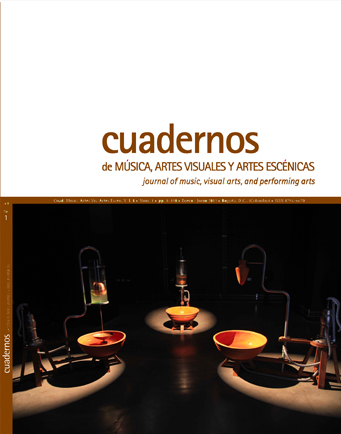Abstract
Este texto reflexiona sobre los discursos e imaginarios de género y sexualidad que se producen dentro del campo del videoarte realizado en Ecuador entre 1998 y 2013. Desde finales de los noventa, hay una presencia de videos que abordan temáticas de cuerpo, política, deseo, violencia, roles e identidad que posicionan nuevos temáticas, lugares de enunciación y sujetos través de las tecnologías de video. A través de un conjunto de obras emblemáticas, el texto analiza los discursos y las estrategias visuales con las cuales se construyen feminidades, masculinidades y diversidades sexuales en el contexto contemporáneo. Está producción plantea un relato alternativo frente a las tendencias dominantes dentro de la historia del arte ecuatoriano. Muestra las nuevas sensibilidades y sujetos que se afirman a través del uso de tecnologías de video.
This journal is registered under a Creative Commons Attribution 4.0 International Public License. Thus, this work may be reproduced, distributed, and publicly shared in digital format, as long as the names of the authors and Pontificia Universidad Javeriana are acknowledged. Others are allowed to quote, adapt, transform, auto-archive, republish, and create based on this material, for any purpose, provided the authorship is duly acknowledged, a link to the original work is provided, and it is specified if changes have been made. Pontificia Universidad Javeriana does not hold the rights of published works and the authors are solely responsible for the contents of their works; they keep the moral, intellectual, privacy, and publicity rights.
Approving the intervention of the work (review, copy-editing, translation, layout) and the following outreach, are granted through an use license and not through an assignment of rights. This means the journal and Pontificia Universidad Javeriana cannot be held responsible for any ethical malpractice by the authors. As a consequence of the protection granted by the use license, the journal is able to publish retractions or to correct information already published. Publishing contents in this journal does not generate royalties for contributors.



